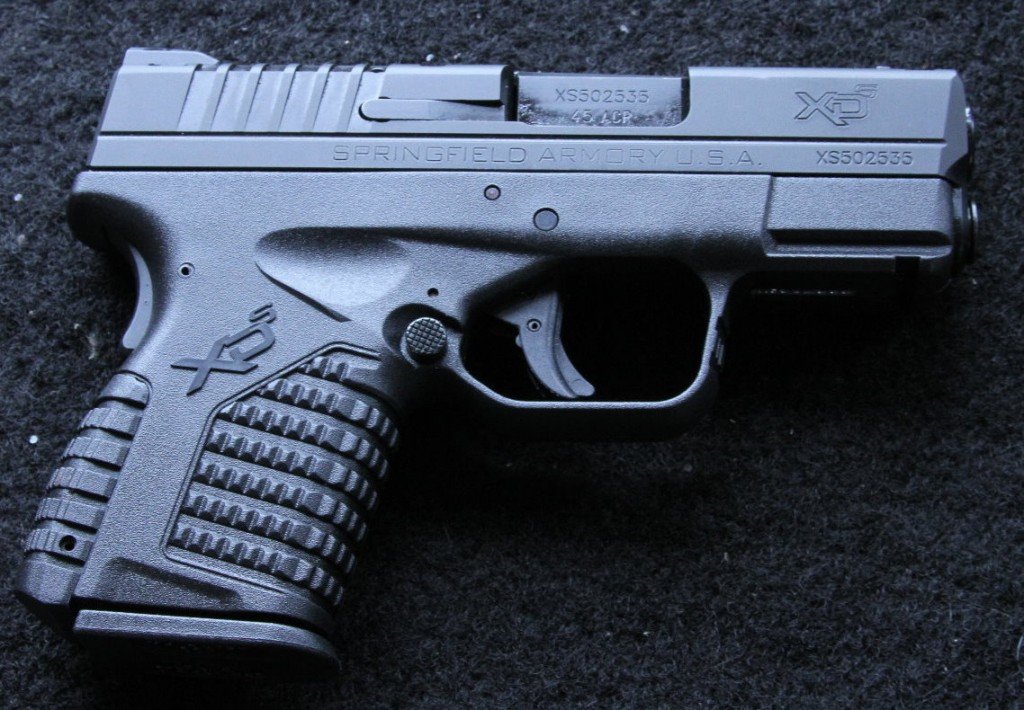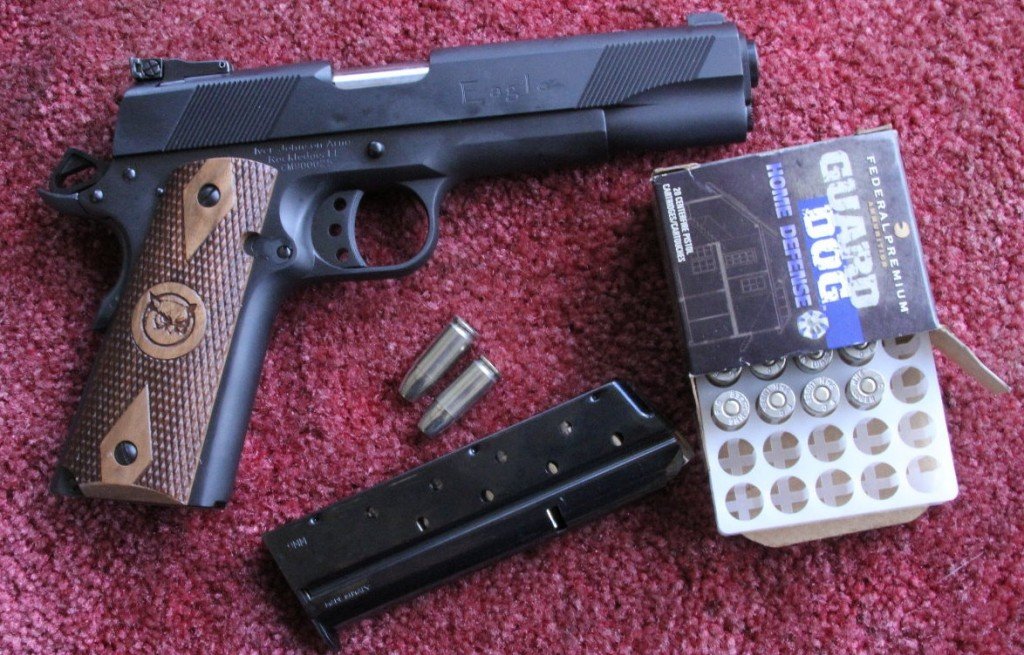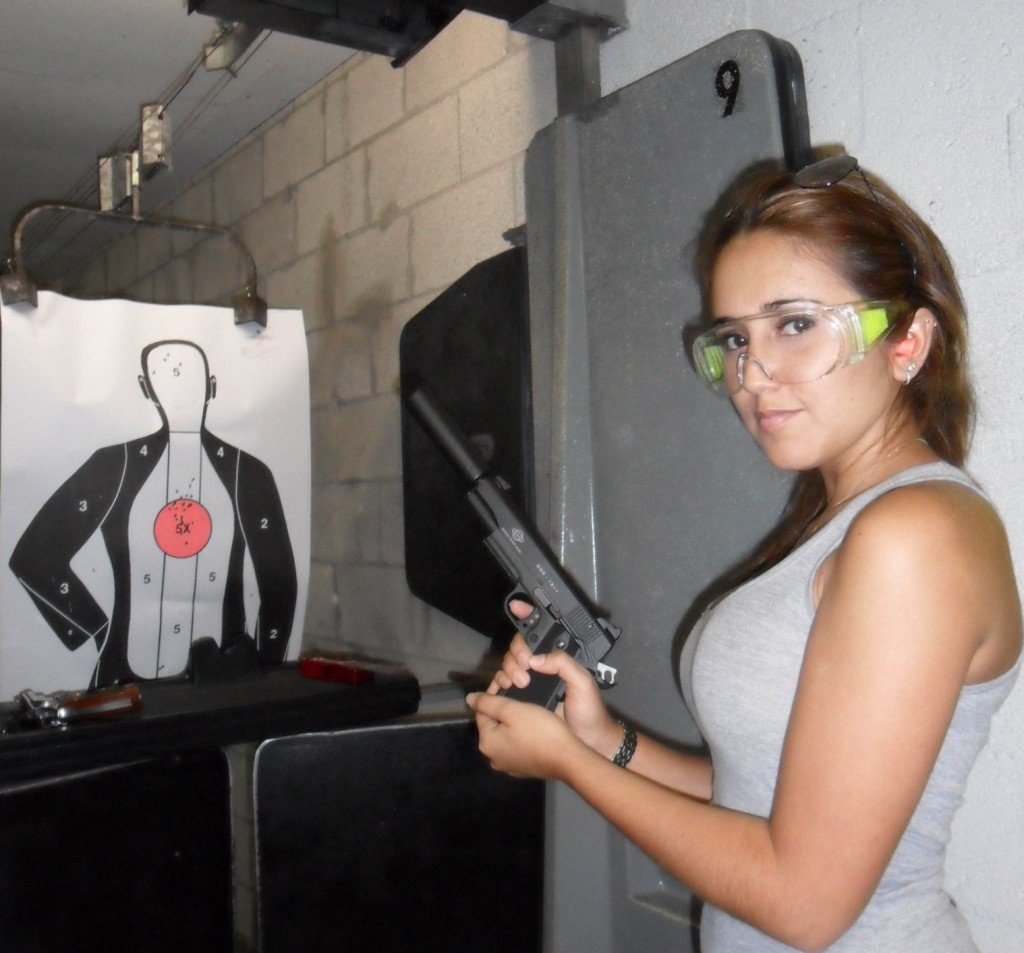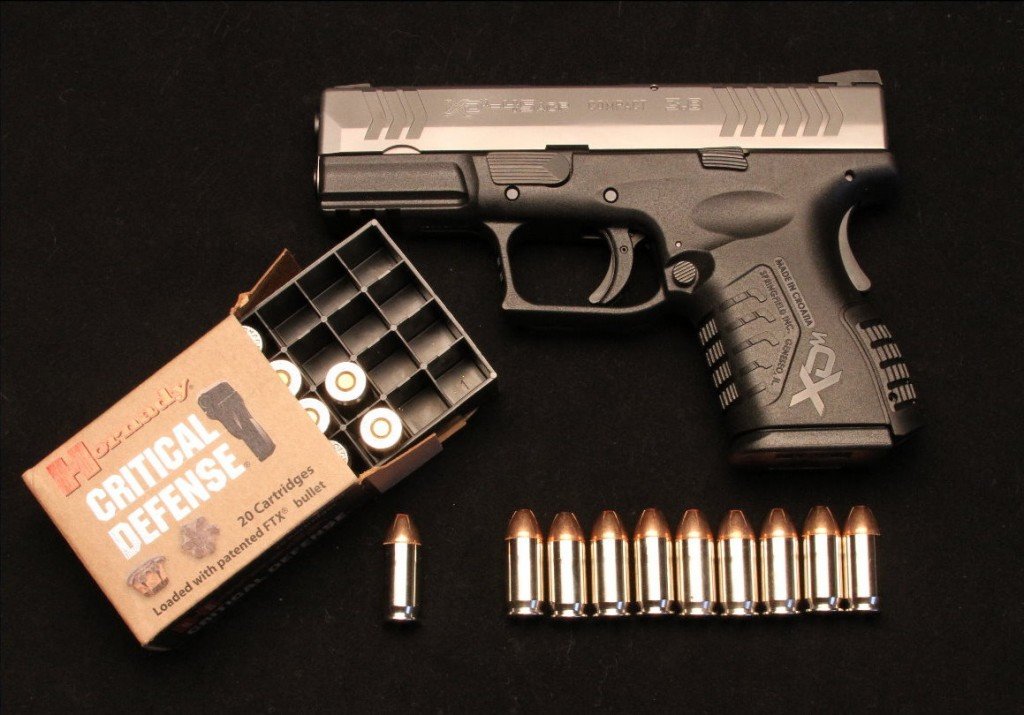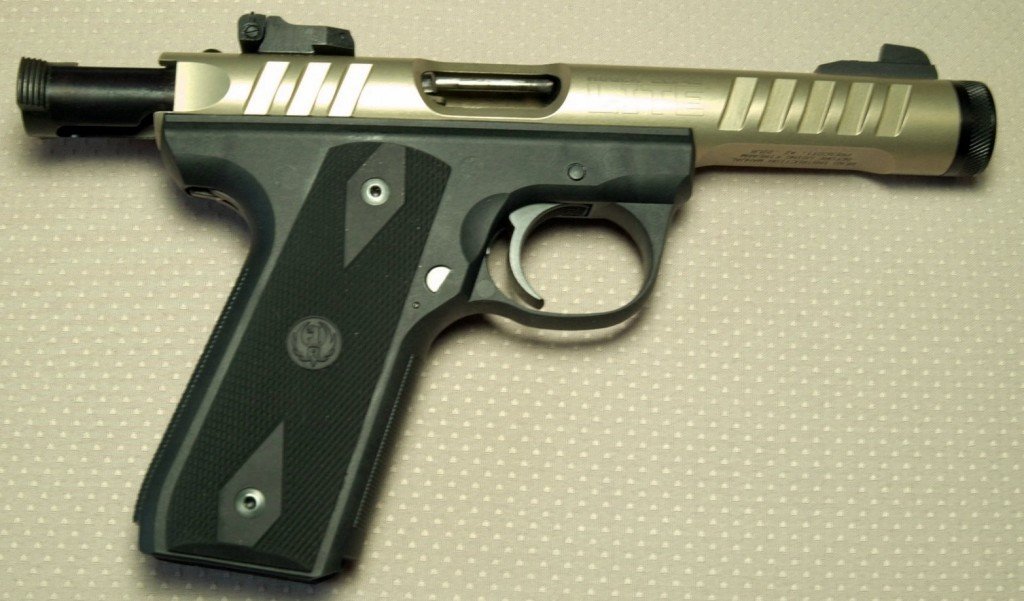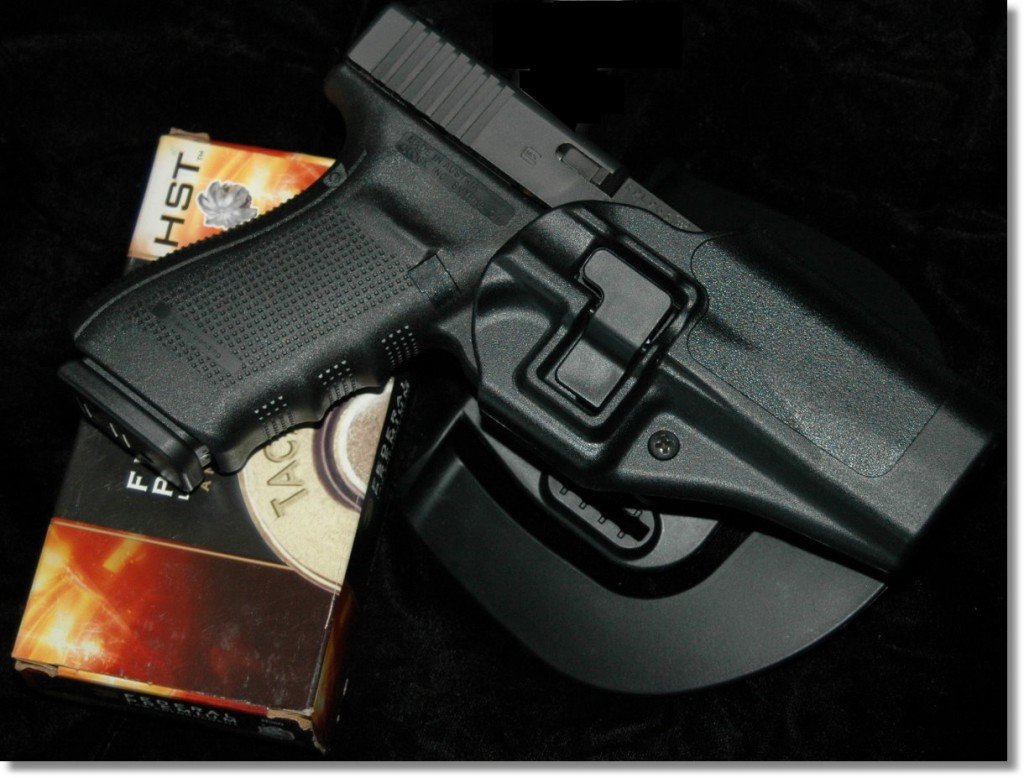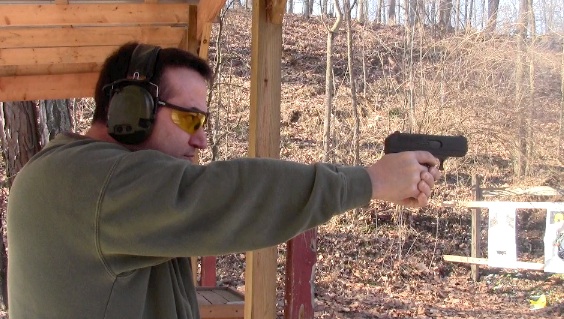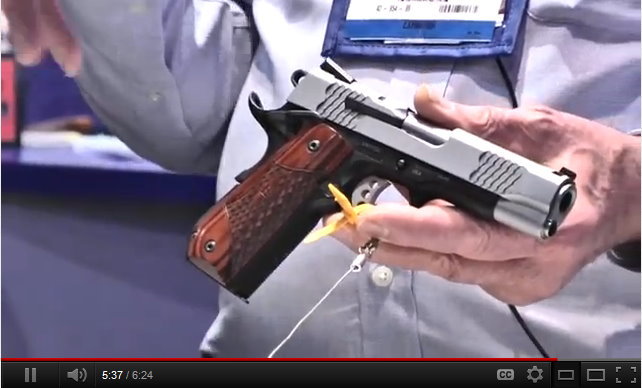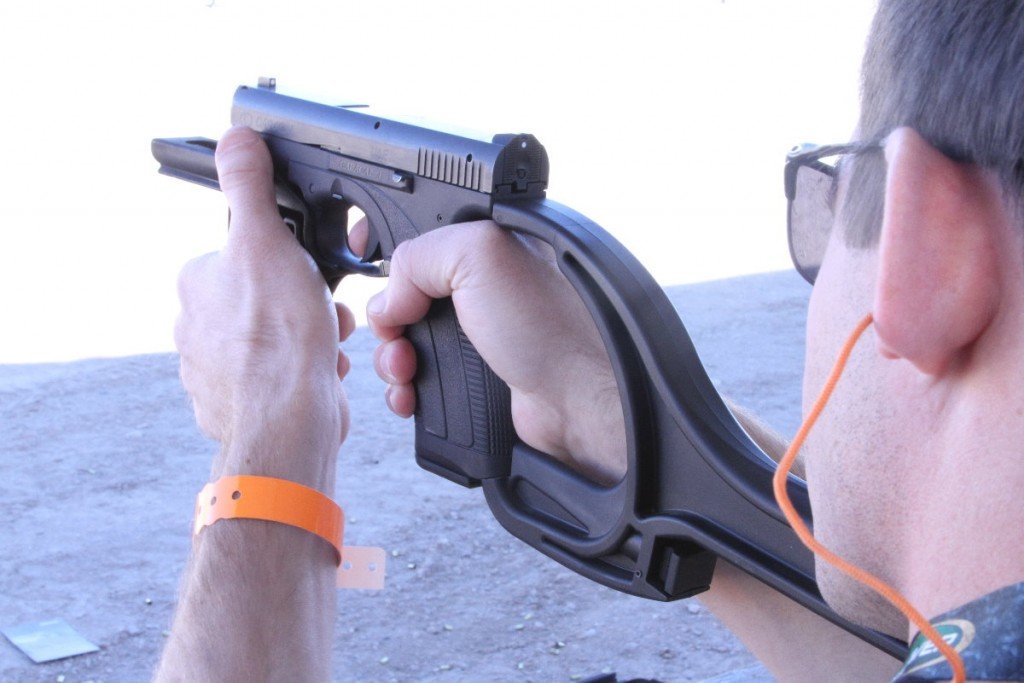Sometimes you are browsing in a gun shop and two pistols look very much the same, yet you really wish you knew the differences. That is the case with the HK45 and the HK P30. Both pistols look pretty much the same, except one is .45ACP and the other is a slightly smaller 9mm. When HK sent us these guns for general review, we thought, as you might, that they are exactly the same, but they are not. If you find yourself standing in a gun shop deciding to impulse buy a brand new HK pistol, this is a bit of an overview as to what is the same in the two guns and what is very different. The HK P30 and HK45 are the new era of Heckler and Koch pistols. HK took the strengths of the ubiquitous USP and added some of what have become standard features on modern polymer pistols, and these two guns were result, along with a few other models that are also very similar. Both are great guns, and caliber considerations aside, the differences in the guns are mostly semantic. Several of the features on the P30 and HK45 are exactly the same and either would be a good choice in a duty, security, or personal defense pistol.
GunsAmerica Product Reviews – Pistols
Show First
Springfield Armory XD-S .45ACP Micro-Pistol – New Gun Review
Published: June 24, 2012 { 210 comments }Soooo, we finally got a Springfield XD-S to play with and shoot. To to make a long story short, really thin, really nice, pleasure to shoot, completely reliable, go buy one. The XD-S, as we said back at SHOT in January, is a slam dunk for Springfield and the gun is everything you could want in a concealed carry firearm. You get six rounds of .45ACP punch in a tiny package, 4.6 inches tall, 6.3 inches long, and all of an inch thick. Big hands, small hands, fat hands and tall hands will find the XD-S easy to shoot and surprisingly not punishing.
Iver Johnson 1911 Series – The 9mm Eagle Range Report
Published: May 29, 2012 { 39 comments }Now that the year 2011 has passed and we are handily into 2012, enough has been said about the 100 year anniversary of the 1911 pistol. We should all be able to just return to shooting these classic and ergonomically near perfect firearms for the next hundred years. The question remains, however, can you buy a bargain priced 1911 and have a good reliable firearm. The folks selling guns under the Iver Johnson name these days would answer that question with a resounding “yes.”
American Tactical Imports ATI 1911 .22 Rimfire with Fake Silencer- New Gun Review
Published: May 13, 2012 { 52 comments }Not too many guns have been copied to the extent of the ubiquitous 1911. There is nary a gun nut without at least one in the safe, but these days they are expensive to shoot. A box of .45 ACP on a good day in bulk quantity is still over 30 cents a round, even with throw away steel cases. If you want to shoot a 1911 for just fun plinking, or to train gun handling for competition, you really need to get one of the .22 rimfire versions of the 1911 that have come out in the last few years. The first ones came from Italy and had some problems, but they have worked out the bugs with those, and this new German version is nearly perfect. It is called the GSG 1911, from German Sport Guns, imported by American Tactical Imports (ATI), and the MSRP is $399, with a street price a little less.
Springfield XDS vs. XDM .45 Compact – Range Report
Published: April 29, 2012 { 57 comments }Back before SHOT Show this year we got a chance to take a look at the Springfield Armory XD(M) .45 Compact 3.8, but we never got to do a real test for a range report. So as we eagerly await the coming of the single stack XDS, before you decide that you must have it, let’s take a look at the Compact XDM .45 alongside the XDS first.
Ruger 22/45 Lite Mark III – New Gun Review
Published: April 12, 2012 { 75 comments }If any gun is quintessentially Ruger, it’s their .22 caliber pistol. Originally designed by Bill Ruger in his garage, it was the very first gun Sturm, Ruger and Company sold, and has been in production continuously for nearly 63 years. It was a huge success from the get go and has continued to get better as new materials, new manufacturing methods, and other refinements have been made in response to consumer demand.
The 22/45 Model variation was introduced in 1992 to provide a training gun for the venerable 1911 Government Model .45. It has the same grip angle and control locations giving 1911 owners a less expensive alternative for perfecting their pistolcraft. In fact, it’s so faithful to the 1911 that you can use 1911 grips on it. All you have to do to make them work is to relieve the upper front corner of the left grip panel to accommodate the slide stop button. So if you have a set of the new Crimson Trace laser grips on your 1911, you can put them on your Ruger for training.
Glock 21 .45ACP Gen 4 – Gun Review – G21
Published: February 28, 2012 { 119 comments }At SHOT Show 2012 a little while back we got a brief look at the Gen 4 version of the Glock 21. Fortunately for me, I had just purchased a new Gen 4 G21 just a few days prior to the show, and we can now get a change to look at it from a more “hands on” point of view.
Hi Point C9 9mm – A Good, Cheap Gun
Published: February 19, 2012 { 378 comments }There are circumstances, often financial sometimes environmental, when having an expensive gun isn’t possible, or may not be the best choice. For those instances, Hi Point offers a value-priced—no, a low-priced–line of American-made handguns that prove time and again that—almost no matter what–they can be counted on to work when you need them. That’s exactly what the company’s owners set out to do—provide a safe, reliable handgun that practically anyone can afford. So what can you expect for about $150 bucks?
Smith & Wesson “E” Series 1911
Published: February 6, 2012 { 45 comments }Smith & Wesson re-launched their “E” Series of 1911s this year and they have been very well received in the market. With an MSRP in the $1300 range and street price much less, you get a lot of advanced features in this new 1911 that you would have to pay a gunsmith for with most other guns. These are 100% “nextgen” 1911s, and besides the modern looking fish scale serrations and the accessory rail that many of the guns have, the intereals of the gun appear to have the best of the good of the classic 1911 design, without including some of the bad ideas that have crept into the gun over the years. The Series 80 firing pin safety has been replaced with a titanium firing pin, so rather than block the pin with a problematic safety device, they just made the firing pin too light to set off a primer when the gun is dropped. They have also cleaned up the trigger housing and each of these guns has a hand fit trigger. Is it truly the quality of a $1,000 1911 with $2,000 worth of work as is claimed in the video? Could be, but we hope to see one of these come in the door for some real-world testing. They look to be a really great buy in a 1911, and hey, they say Smith & Wesson on them, so they will retain their value and eventually become collectible. That’s a lot of selling points on a gun that has so many variants and options out there. Check out the video, and please don’t harp on George in the comments. He’s a big, tough, sensitive guy!
Caracal – A New Polymer Pistol from the UAE
Published: February 6, 2012 { 90 comments }You couldn’t miss Caracal at SHOT Show 2012. They had a big booth at Media Day, and all of the buses to and from the hotels from the show were wrapped in Caracal artwork. Their booth was downstairs with us, but it was very impressive, and this could be a gun that makes it to the US market this year. At $500, however, it will most likely be a non-starter.


